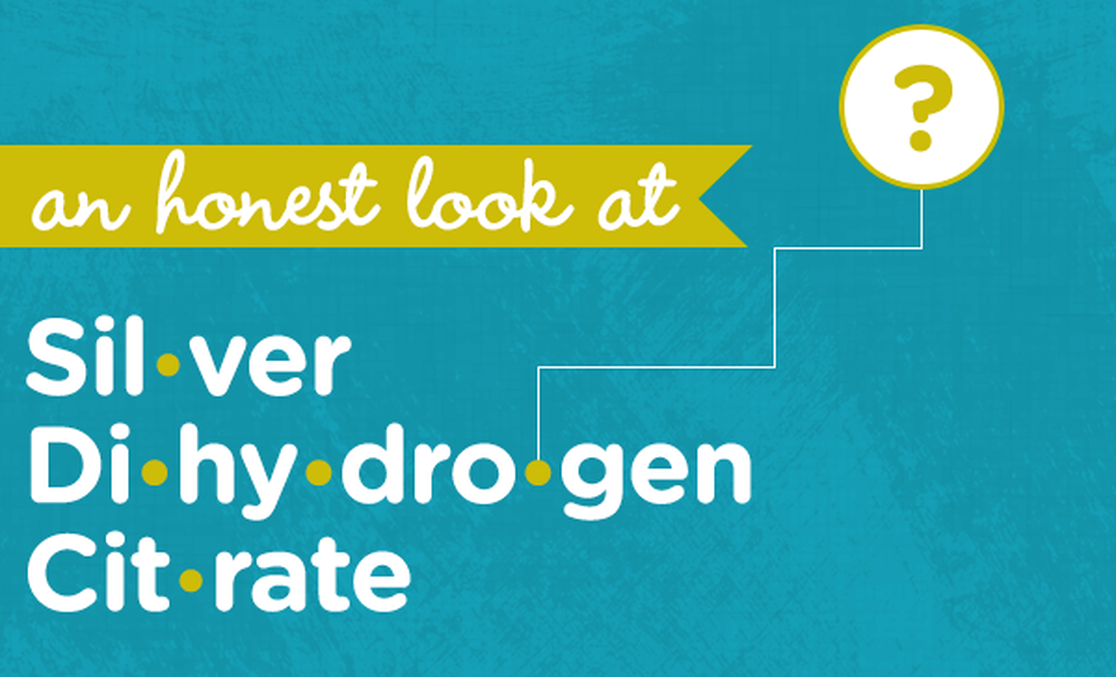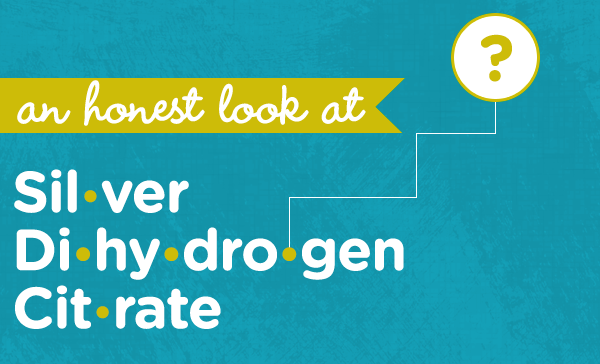This is part of our ongoing series helping consumers better understand chemicals, chemistry, and product formulations. We translate the science, bust the myths, and give you an honest assessment, so you can make informed choices for your family!
Ingredient:
Silver Dihydrogen Citrate (SDC)
What it is:
Ionic silver in a citric acid solution.
What it does:
Fights bacteria. Most personal care products are made with a lot of water and a variety of nutrients which make an incredibly hospitable breeding ground for microorganisms. What’s worse – the product might smell and look just fine, but be swarming with bacteria or fungi that are dangerous to your health. Effective preservatives are vital for ensuring safety!
Why we use it:
Preservatives are especially difficult to formulate because they have to be strong enough to kill bacteria, but they also can't impact the effectiveness of other ingredients. Of course, for The Honest Company, safety is key. Conventional preservatives like parabens are linked to hormone disruption (1-6). Another common category of conventional preservatives are formaldehyde-releasers, but formaldehyde is a known carcinogen (7,8). We were thrilled to discover SDC which is non-toxic to you and your family, non-irritating, colorless, and odorless.
- In a scientific review conducted by the EU’s Scientific Committee on Consumer Products, they deemed SDC to be non-toxic by oral exposure, non-toxic by dermal exposure, non-irritating, and that it’s not a skin sensitizer.
- The World Health Organization assessed the safety of using silver compounds for sanitizing drinking water and concluded that there have been no reports of toxic effects resulting from the exposure of healthy persons to these compounds.
Safe and effective – that’s what we like!
References:
- Byford JR, Shaw LE, Drew MGB, Pope GS, Sauer MJ, Darbre PD (2002). Oestrogenic activity of parabens in MCF7 human breast cancer cells. Journal of Steroid Biochemistry & Molecular Biology 80:49-60.
- Darbre PD, Aljarrah A, Miller WR, Coldham NG, Sauer MJ, Pope GS (2004). Concentrations of parabens in human breast tumours. Journal of Applied Toxicology 24:5-13.
- Darbre, P. D., & Harvey, P. W. (2008). Paraben esters: review of recent studies of endocrine toxicity, absorption, esterase and human exposure, and discussion of potential human health risks. Journal of applied toxicology, 28(5), 561-578.
- Marques-Pinto, A., & Carvalho, D. (2013). Human infertility: are endocrine disruptors to blame?. Endocrine connections, 2(3), R15-R29.
- Boberg, J., Taxvig, C., Christiansen, S., & Hass, U. (2010). Possible endocrine disrupting effects of parabens and their metabolites. Reproductive Toxicology,30(2), 301-312.
- Shaw, J. (2009). Estrogenicity of parabens revisited: Impact of parabens on early pregnancy and an uterotrophic assay in mice. Reproductive toxicology,28(1), 26-31.
- Formaldehyde and Cancer Risk. (n.d.). Retrieved January 05, 2015, from http://www.cancer.gov/cancertopics/factsheet/Risk/formaldehyde
- Swenberg, J. A., Moeller, B. C., Lu, K., Rager, J. E., Fry, R. C., & Starr, T. B. (2012). Formaldehyde Carcinogenicity Research 30 Years and Counting for Mode of Action, Epidemiology, and Cancer Risk Assessment. Toxicologic pathology, 0192623312466459.
- Chapman, J. S. (1998). Characterizing bacterial resistance to preservatives and disinfectants. International Biodeterioration & Biodegradation, 41(3), 241-245.
- Chapman, J. S., Diehl, M. A., & Fearnside, K. B. (1998). Preservative tolerance and resistance. International journal of cosmetic science, 20(1), 31-39.
This post was revised as of 1/26/2016.
We aim to provide you with the most honest and credible information possible. This article was reviewed for accuracy by The Honest Team and was written based on sources that are linked at the bottom of the article.
blog_review_statement




